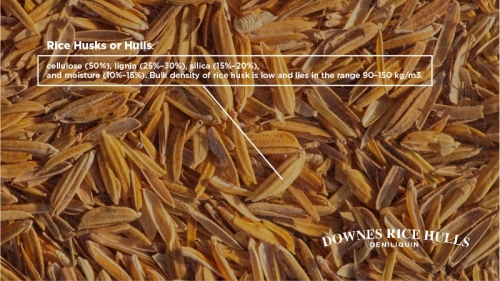Rice hulls, also known as rice husks, are the protective coverings of rice grains. They are the outermost layer that is removed during the milling process of rice production. Rice hulls have many practical and beneficial uses across various industries. Here are some common uses for rice hulls:
- Animal Bedding
- Soil Amendment
- Mulching Material
- Building Materials
- Biofuel Production
- Insulation Material
- Industrial Applications
- Agriculture and Horticulture
Sustainable and Versatile Rice Hulls
The uses of rice hulls extend beyond the examples mentioned above, and ongoing research and innovation continue to explore new applications for this abundant agricultural by-product. Overall, rice hulls provide a sustainable and versatile resource that can be utilised in multiple industries, contributing to waste reduction and promoting eco-friendly practices.
- Animal Bedding: Rice hulls can be used as bedding material for livestock and poultry. They provide a comfortable and absorbent bedding option that helps maintain hygiene and cleanliness in animal shelters. Rice hulls have good insulation properties and can help regulate temperature and moisture levels.
- Soil Amendment: Rice hulls are rich in silica and organic matter, making them an excellent soil amendment. They can improve soil structure, water retention, and aeration. Rice hulls break down slowly, releasing nutrients into the soil over time. They are commonly used in horticulture, gardening, and landscaping to enhance soil quality and promote healthy plant growth.
- Mulching Material: Rice hulls make effective mulch for gardens and landscapes. They act as a protective layer on the soil surface, reducing weed growth, conserving moisture, and regulating soil temperature. Rice hull mulch is lightweight, easy to spread, and biodegradable.
- Building Materials: Rice hulls can be used in the production of building materials such as boards, panels, and insulation. When combined with a binding agent like cement or clay, rice hulls create a lightweight and eco-friendly composite material that can be used for construction purposes.
- Biofuel Production: Rice hulls have high lignocellulosic content, which makes them suitable for biomass energy production. They can be used as a renewable fuel source for generating heat and electricity. Rice hulls are burned in specialized boilers or converted into biochar or bio-oil through processes like pyrolysis.
- Insulation Material: Rice hulls have insulating properties and can be used as a fill material in construction for thermal insulation. They are lightweight, fire-resistant, and non-toxic, making them an eco-friendly alternative to traditional insulation materials.
- Industrial Applications: Rice hulls find applications in various industries such as abrasive production, oil absorption, and manufacturing of bio-based materials like bioplastics and bio-composites. Their unique properties make them suitable for diverse industrial purposes.




